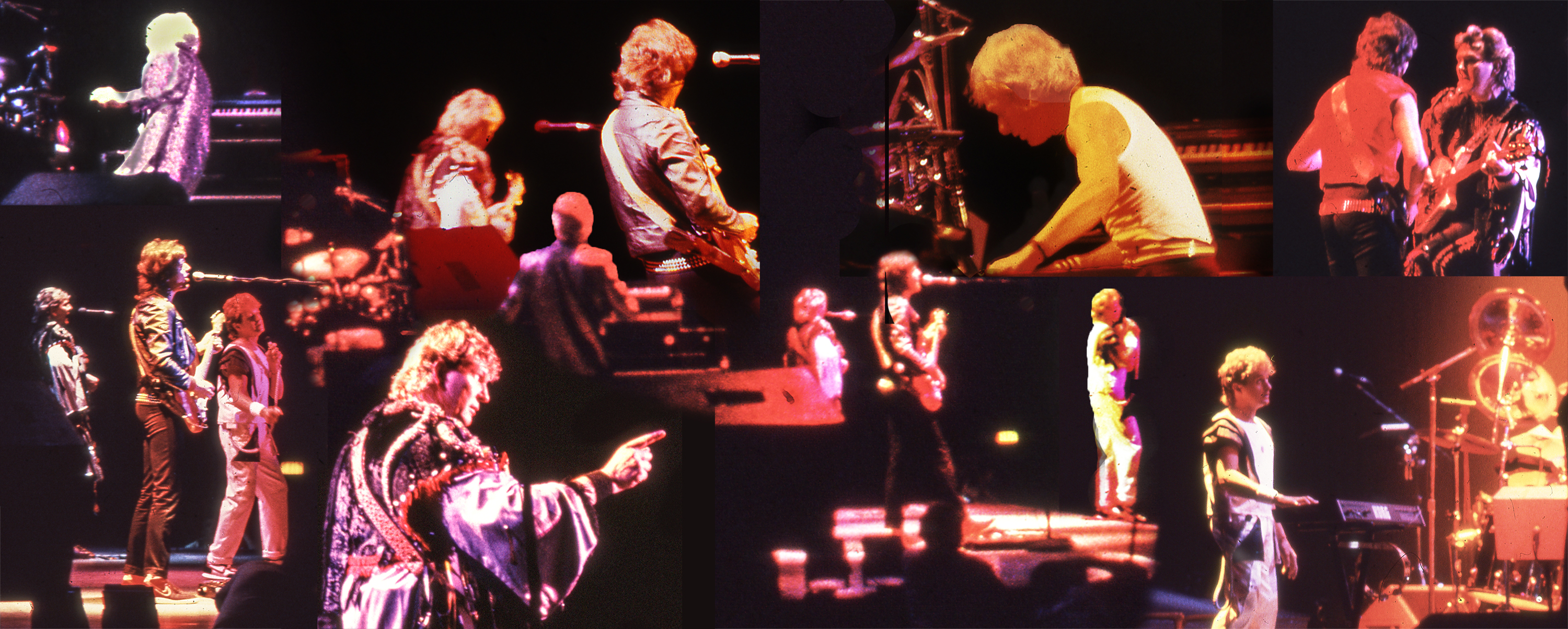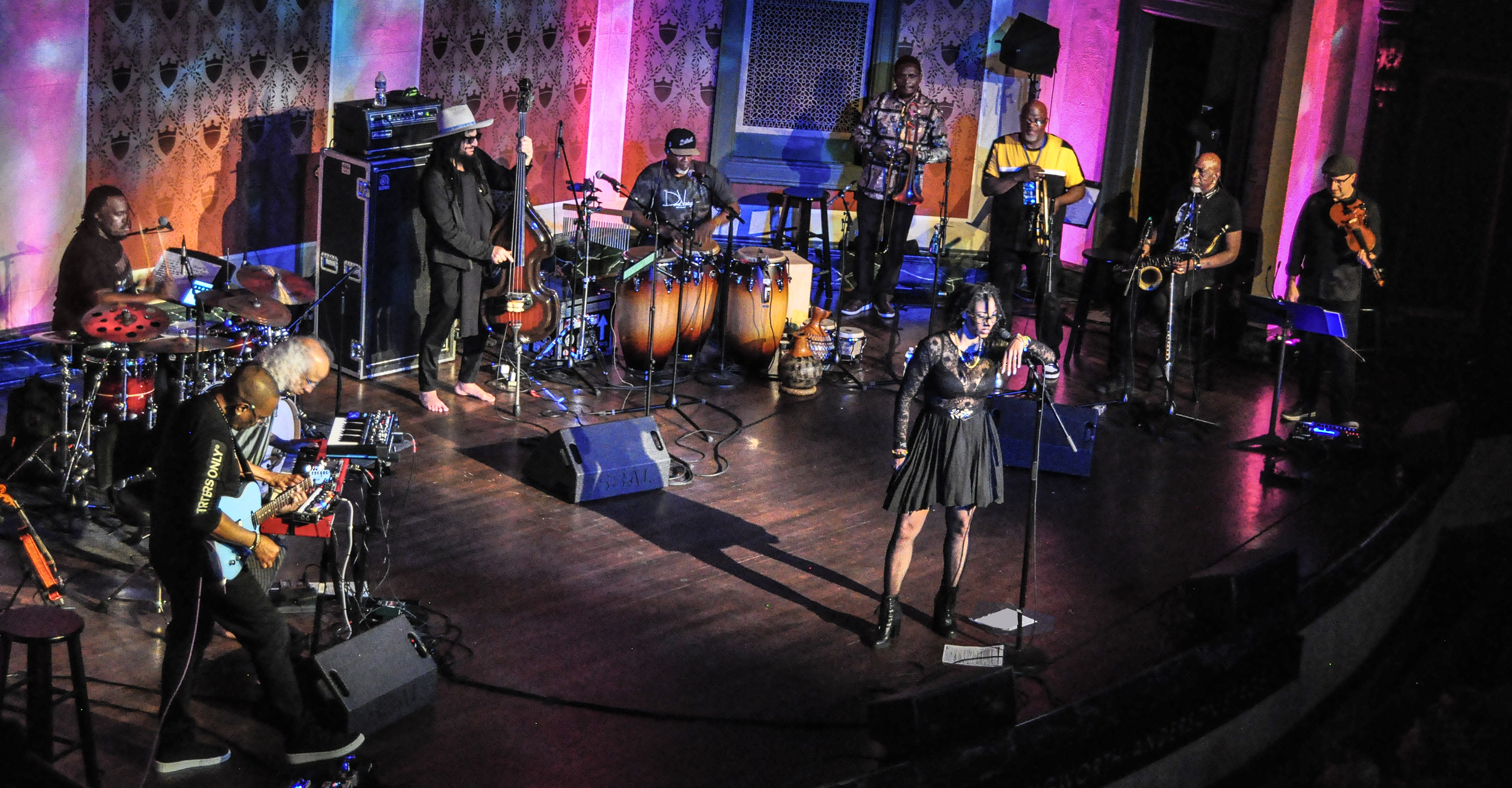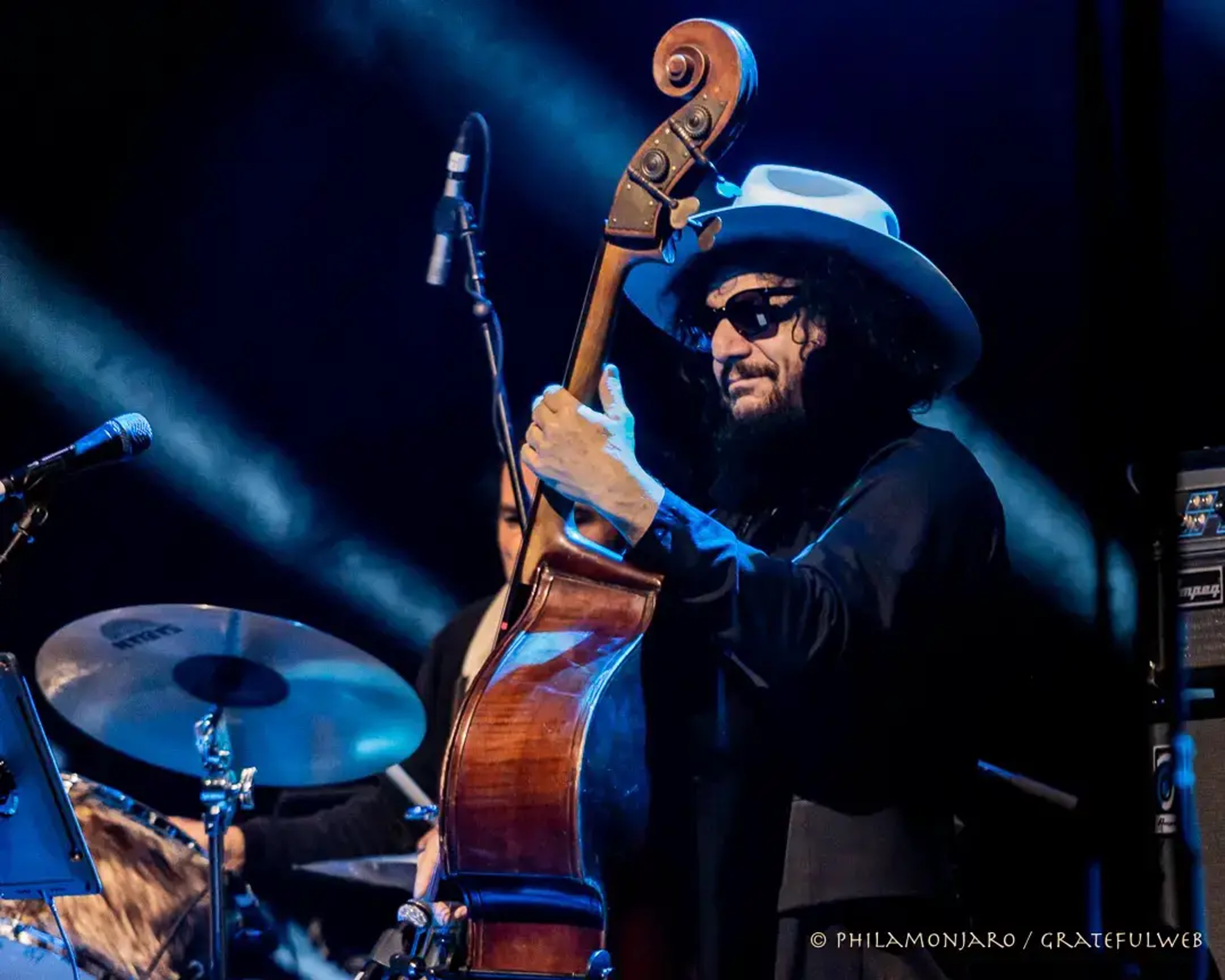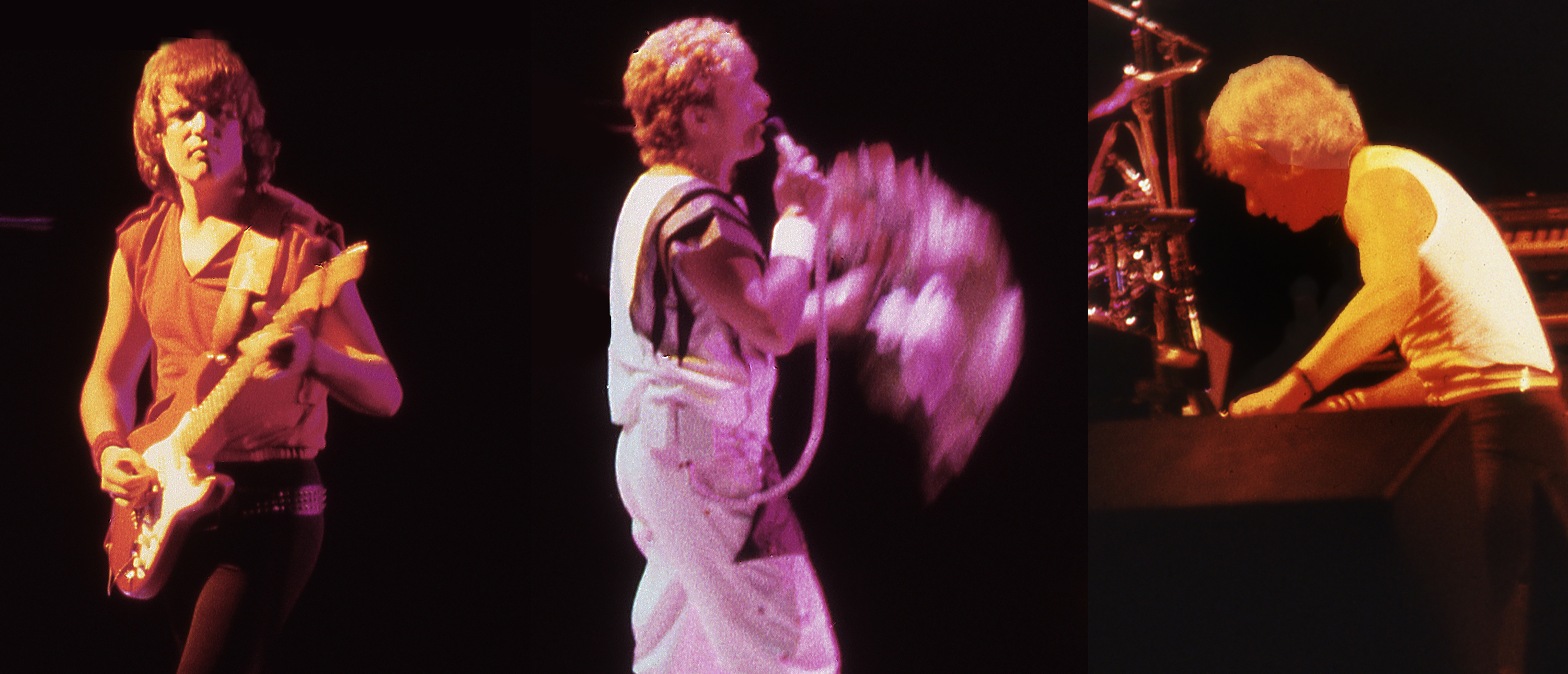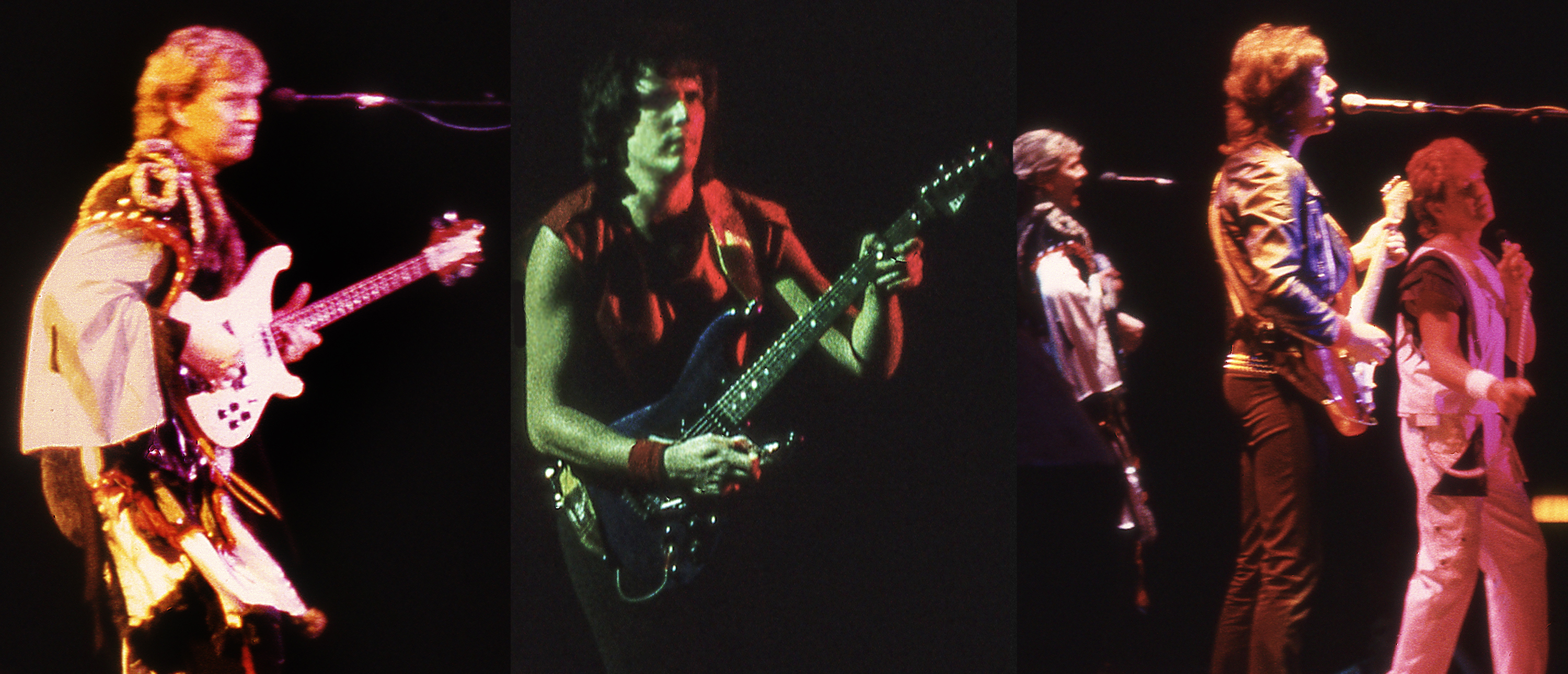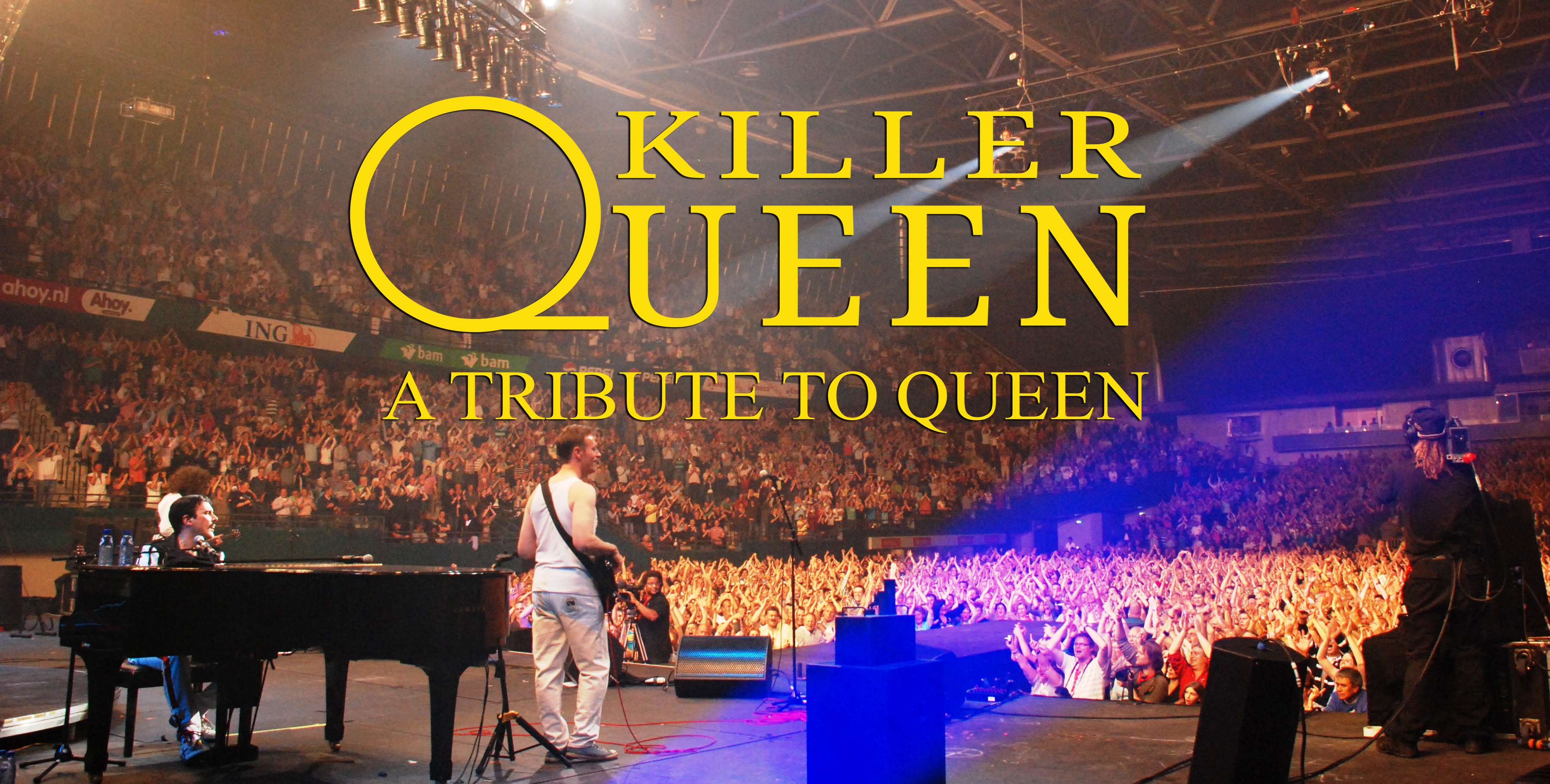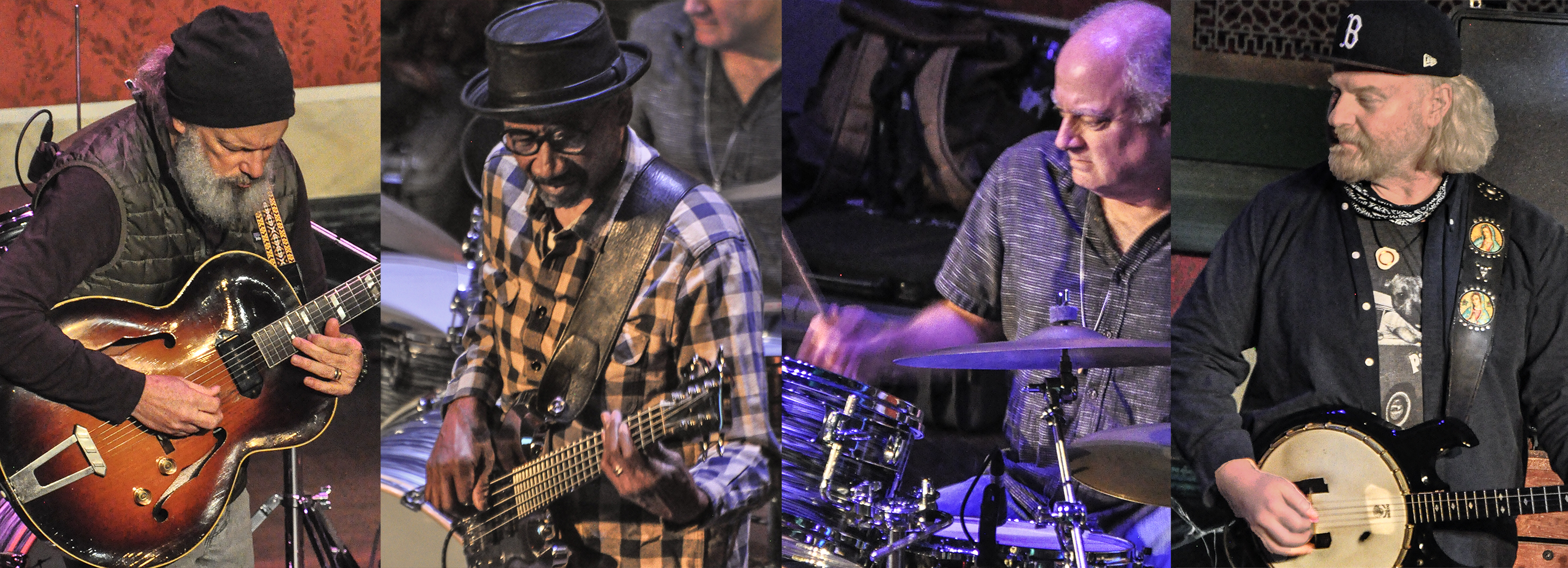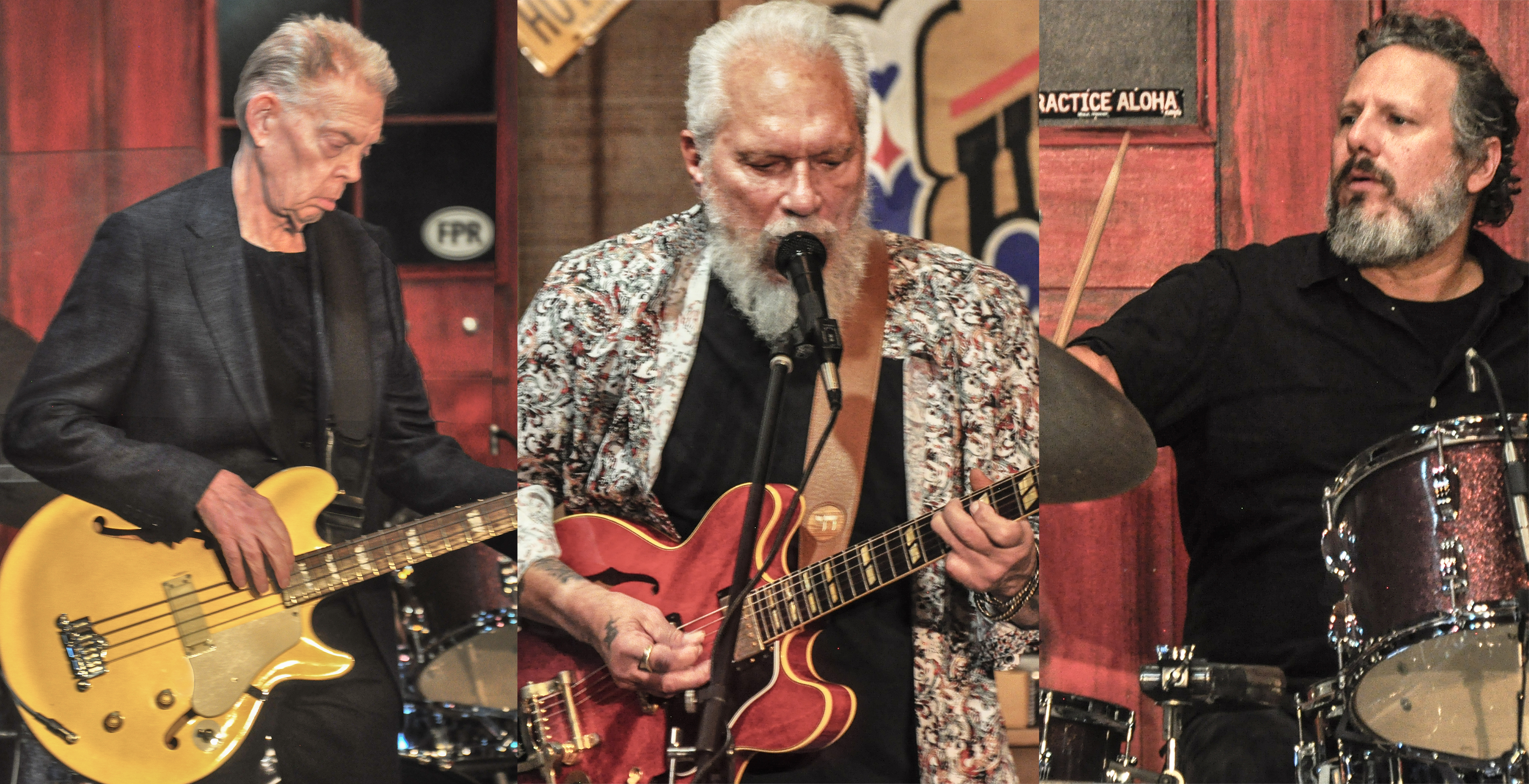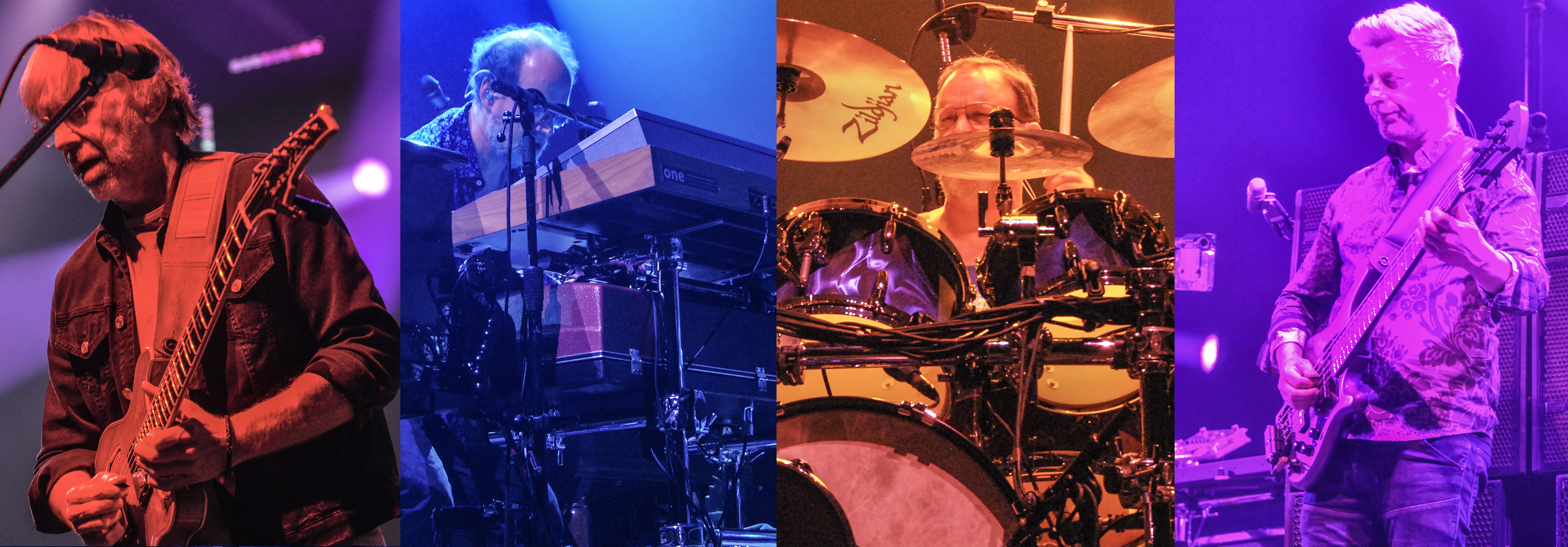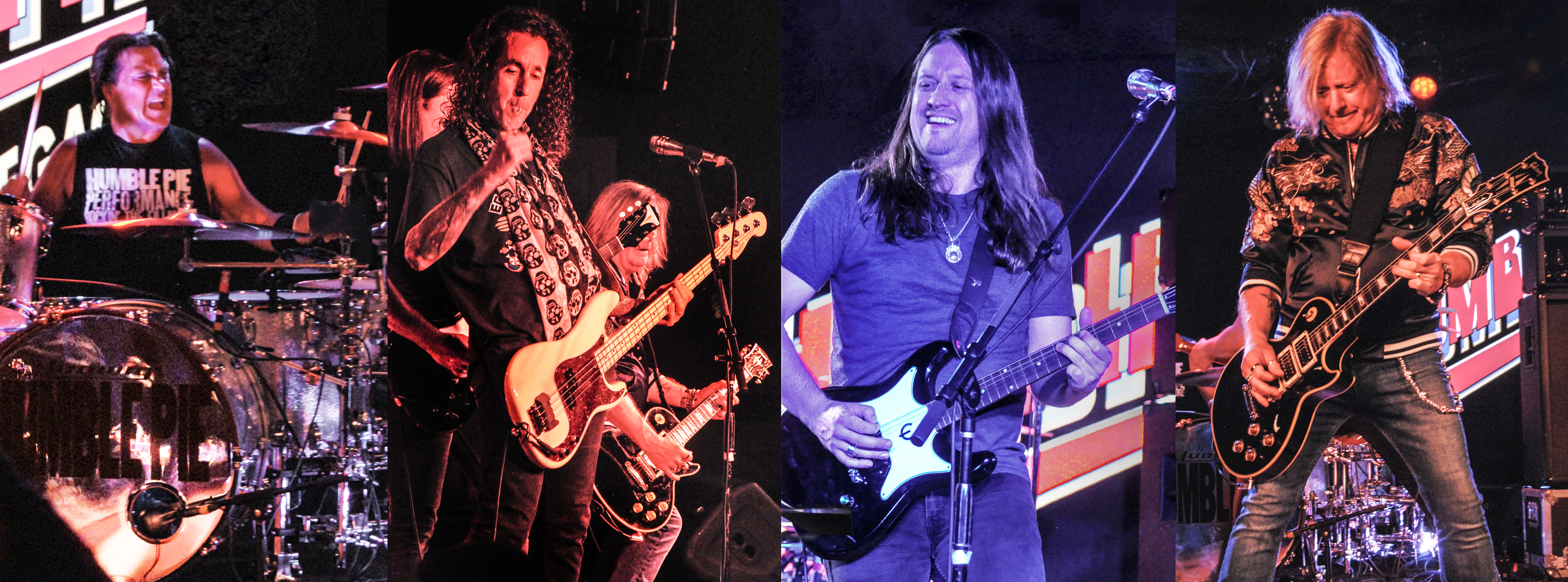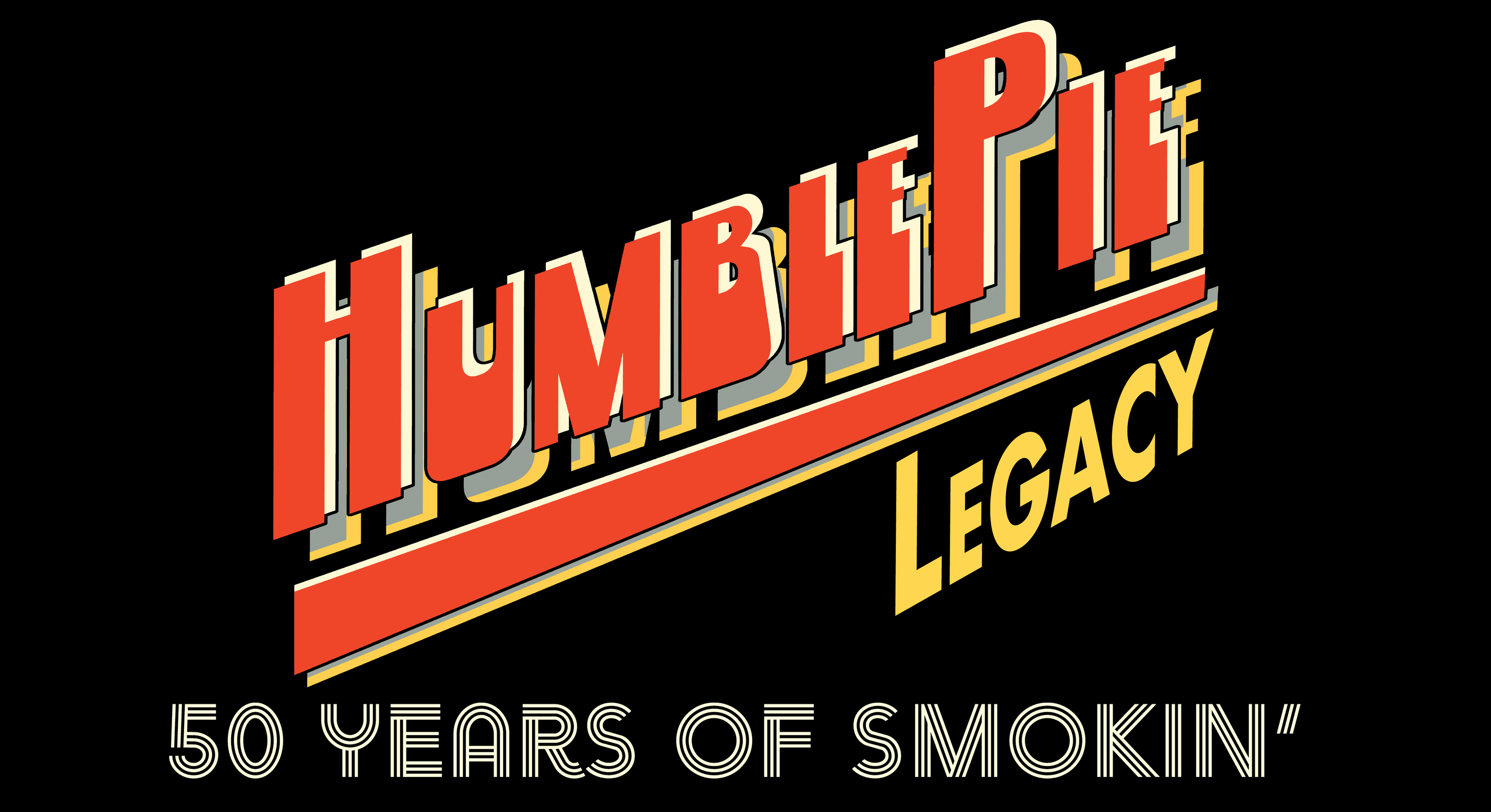The legendary British prog-rock band YES started 1984 in a fine and busy mood, and they had every reason to celebrate. Thanks to strong radio play and follow-up rotation of video for “Owner of a Lonely Heart" on MTV, early 1984 sales of the album and featured singles came out of the sky and – if you’ll pardon the expression – they stood there. For example, “Owner” had become a #1 hit in the U.S. and ranked highly throughout the world in the early weeks of January. (Not only that, but also dance remixes of that song had also given the band crossover motion, landing them in the #3 position in Billboard magazine’s “Dance and Disco” sales chart. When did prog bands ever do that?)
In addition, dates were being rolled out for an aggressive campaign of spring and summer tours in North America and Europe, and ticket sales were moving at a very healthy clip. (A follow-on NA tour would come in the fall, with a similar heady response from the public.) Hopes were high – everyone was happy. What could go wrong, right?
Well, in one moment of celebration with his wife in early January when “Owner of a Lonely Heart” had just gone #1 in the U.S., guitarist Rabin suffered a traumatic injury in a public Florida swimming pool. (His abdomen would never be the same.) So the start of the tour – originally planned for early in the new year – had to be pushed back until the last week of February to allow his recovery from an emergency splenectomy. Then, it was off to the races for the five thoroughbred musicians, who after a calendar year – well into February 1985 – would go on to log nearly 150 shows, including added dates in the less typical market of South America.
We said five musicians, didn’t we? Well, for those who have been paying attention, that is both right and also not quite correct. There was also the not-so-small matter of having a proficient keyboardist to reproduce the richly-layered songs – both new and old – on the upcoming tour. And, as touched upon earlier, Tony Kaye had left them with more than a bit of patching to do at the end of the album’s recording.
The band and management wisely had wisely taken steps, however, to have that covered by offering the live gigs to Eddie Jobson, a pure-bred prog keyboardist known for his work in Roxy Music, Frank Zappa and the short-run British supergroup UK. In that latter line-up, for instance, he had worked with Asia’s bassist John Wetton, founding Yes drummer Bill Bruford and improvisational fusion guitarist Allan Holdsworth. So it would seem that Jobson was once again very much inside the league of crafty musical friends with the new Yes line-up.
In his heart of hearts, though, Jobson was actually said to be quite ambivalent about the project, as he had not worked on the 90125 recording. But once he had heard the finished album, he quickly changed his mind and said ‘yes’ to the offer. So he was on the fast track to master the proposed setlist and he was soon beavering away to learn all of his parts.
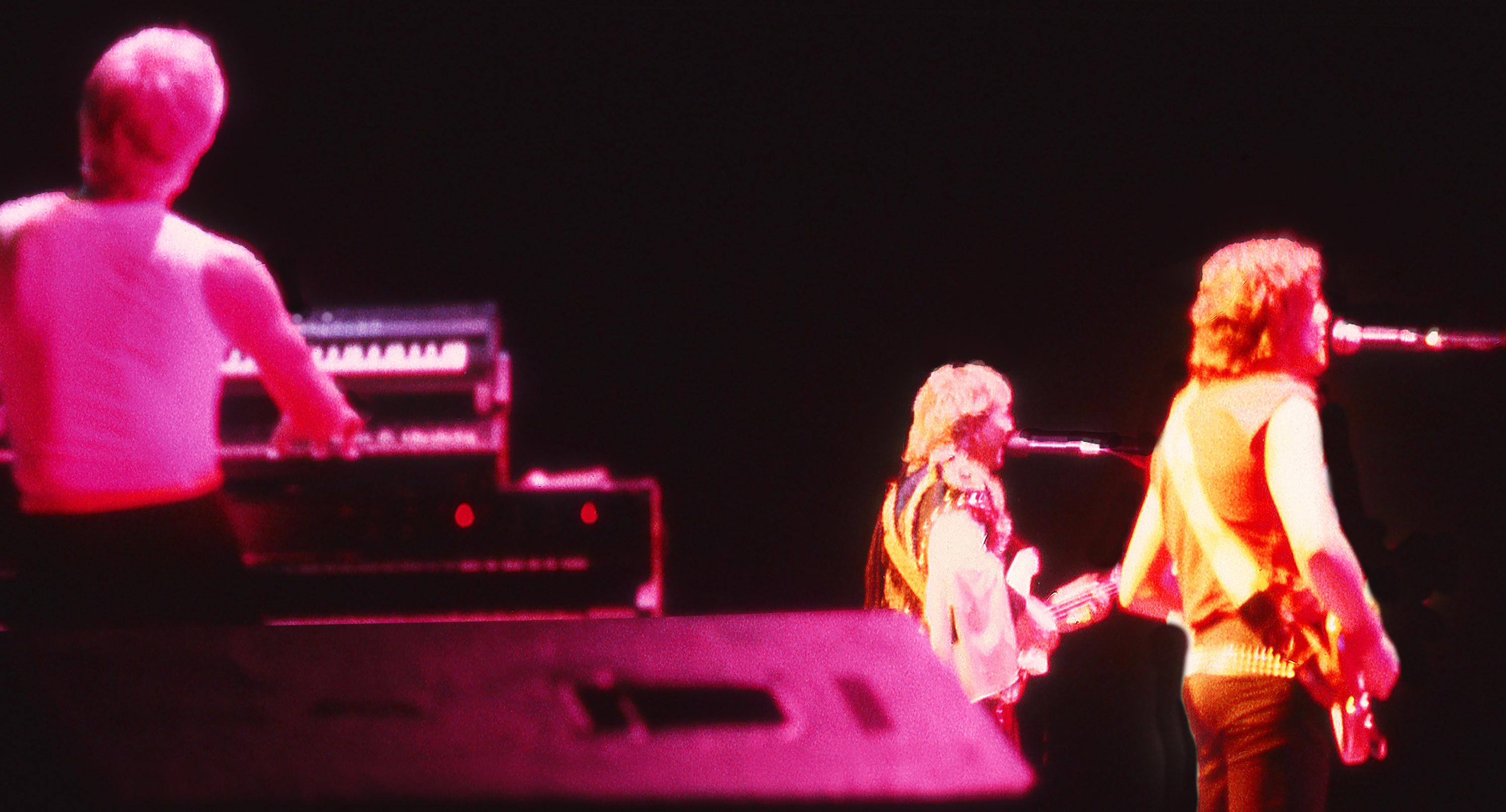 Tony Kaye, Chris Squire & Trevor Rabin | Miami University, Oxford OH | Photo: Sam A. Marshall/Cincinnati OH
Tony Kaye, Chris Squire & Trevor Rabin | Miami University, Oxford OH | Photo: Sam A. Marshall/Cincinnati OH
“There's method in the key of C. . .”
Shortly into the new year, when Tony Kaye had come off the 1983 Badfinger tour and was once again available, Yes management sought him out again and invited him to join on as a second keyboardist to Jobson. The belief of Yes’ seasoned A&R man Phil Carson was that even though Jobson was as good as he was, the band needed Kaye, if it were at all possible to bring him back. Due to his knowledge of the older Yes songs, his work on the 90125 album and his name recognition among the Yes fan base, Kaye was seen as essential, after all. And, happily for Kaye, his studio nemesis, Trevor Horn, would not be having any involvement in the live shows.
When Kaye accepted, the Yes team then informed Jobson that he and Kaye would be sharing keyboard duties, but Jobson would promptly withdraw. (He had also learned that the tour technical team had designed his stage rig based on the needs of the song arrangements, without seeking his input.) So he left Yes without ever recording or performing a single live note with the band.
But, interestingly enough, Jobson’s likeness did make it into some promo photos and that first video in the time between, so some permanent, non-musical trace of his otherwise ghostly membership has remained. (The “Owner of a Lonely Heart” video was later revised to take out Jobson’s face as much as possible.) Meanwhile, another double-plus good payoff: With the unforeseen delay for Rabin’s recuperation, Kaye had enough time to come up to speed on all the songs he would need to learn. Just another of those quirky turns in Yes’ crazy-quilt history that worked in their favor, eh?
The band’s transformation from Cinema into Yes had also had guitar implications for Rabin. When he first became involved with Squire and White in late 1982, he hadn’t foreseen that he’d ever be taking the place of longtime Yes guitarist Steve Howe and having to learn any of his old, schizy, scattershot-style guitar parts. The gentlemen’s agreement at the time was that Cinema was to be an all-new deal. But all that changed when the band’s name once again reverted to Yes. Obviously, for the live shows, older fans would be expecting to hear classic Yes songs – certainly “Roundabout”, “I’ve Seen All Good People” and “Long Distance Runaround” – played to satisfy their fond memories of the band’s celebrated Jurassic days.
Everything – or so it seemed – was suddenly on the table again. And Rabin was said to be rather worried about that prospect, as his original intentions with the band had only been forward-looking. But, most fortunately, as the band’s spiritual leader and de facto patriarch, founding bassist Squire helped to put all of the guitarist’s fears to bed by giving him first choice of what older songs they might play. And an added bonus: Squire then also gave Rabin the freedom to play them in his own, more florid arena-rock-meets-jazz-classical-fusion style. Huge problems solved!
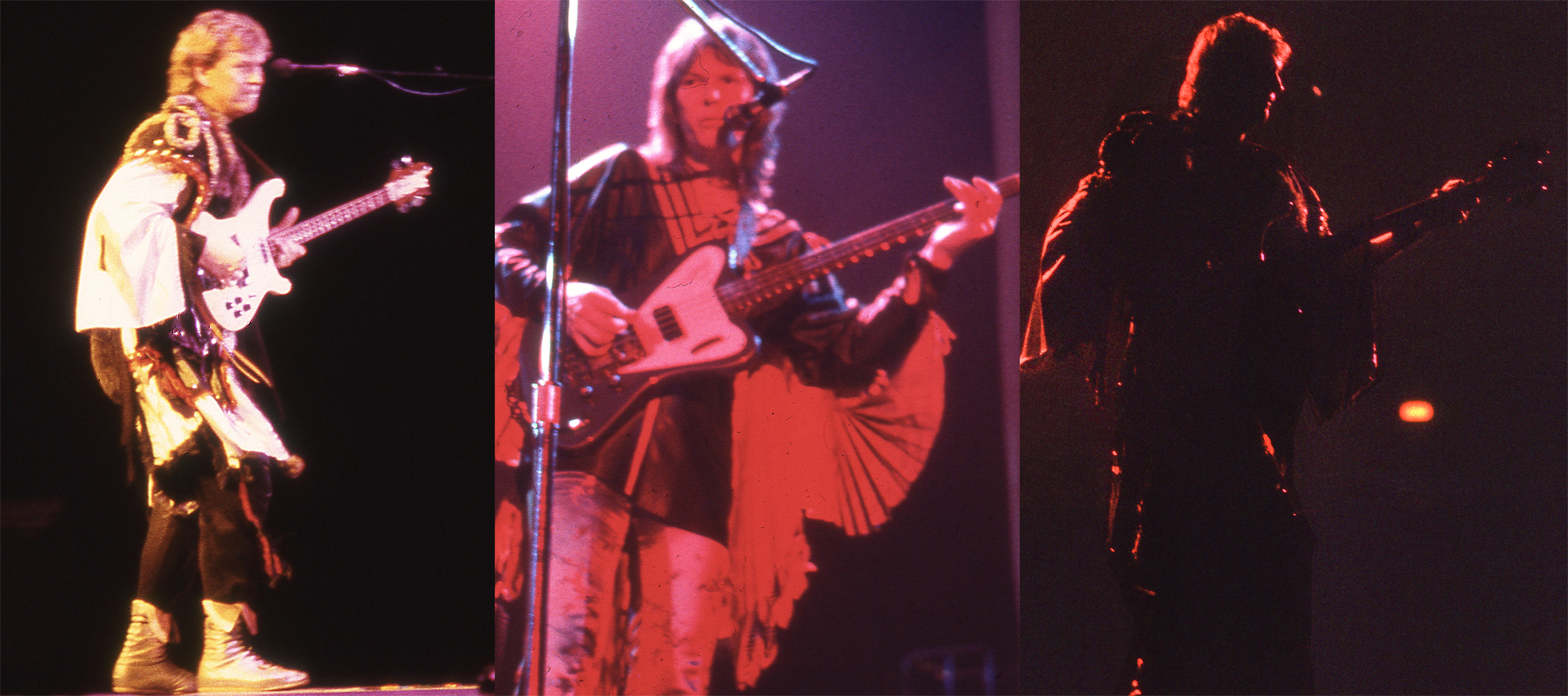 Chris Squire | Straight into Darkness | End Photos & Composite: Sam A. Marshall | Center Photo: Courtesy Estate of Joseph Stercz/Cincinnati OH
Chris Squire | Straight into Darkness | End Photos & Composite: Sam A. Marshall | Center Photo: Courtesy Estate of Joseph Stercz/Cincinnati OH
Fortunately for Rabin, and Tony Kaye as well, this wasn’t just more Yes stage smoke and lasers. An interesting coincidence is that Rabin – perhaps even with Kaye in mind – had chosen three longer songs from the Yes Album – “Yours Is No Disgrace”, “I’ve Seen All Good People” and “Starship Trooper”. This fistful of songs was nearly a half hour of material out of a two-hour show that Kaye – a co-writer of the originals – would already know intimately. So, happily, Rabin’s selections would also make the learning curve easier for his bandmate. Now that’s teamwork!
Although both Anderson and Rabin would play some momentary, supporting keyboards in the show, there were portions of songs that Kaye did not work on in the later 90125 recordings that would still need to be played while those two were, um, ‘doing other things’. (Yes, the album is full of them.) So, for insurance, the band added a supplementary keyboardist, Casey Young, who would remain under the stage – unseen and unacknowledged – for a large part of the tour.
Reportedly, Young would provide mostly supplemental elements from samples, patches of vocals, string parts and some instrumental-digital interface parts. (In time, Kaye would finally become a late adopter and begin using some interfaces on later tours.) And audiences would be none the wiser of this special arrangement. And – as one slightly dazzled fan attending a show later that year– I can most certainly say that I had no inkling otherwise. In later shows, however, Young would finally emerge to take his rightful place on stage among the others and to take his much-deserved bows.
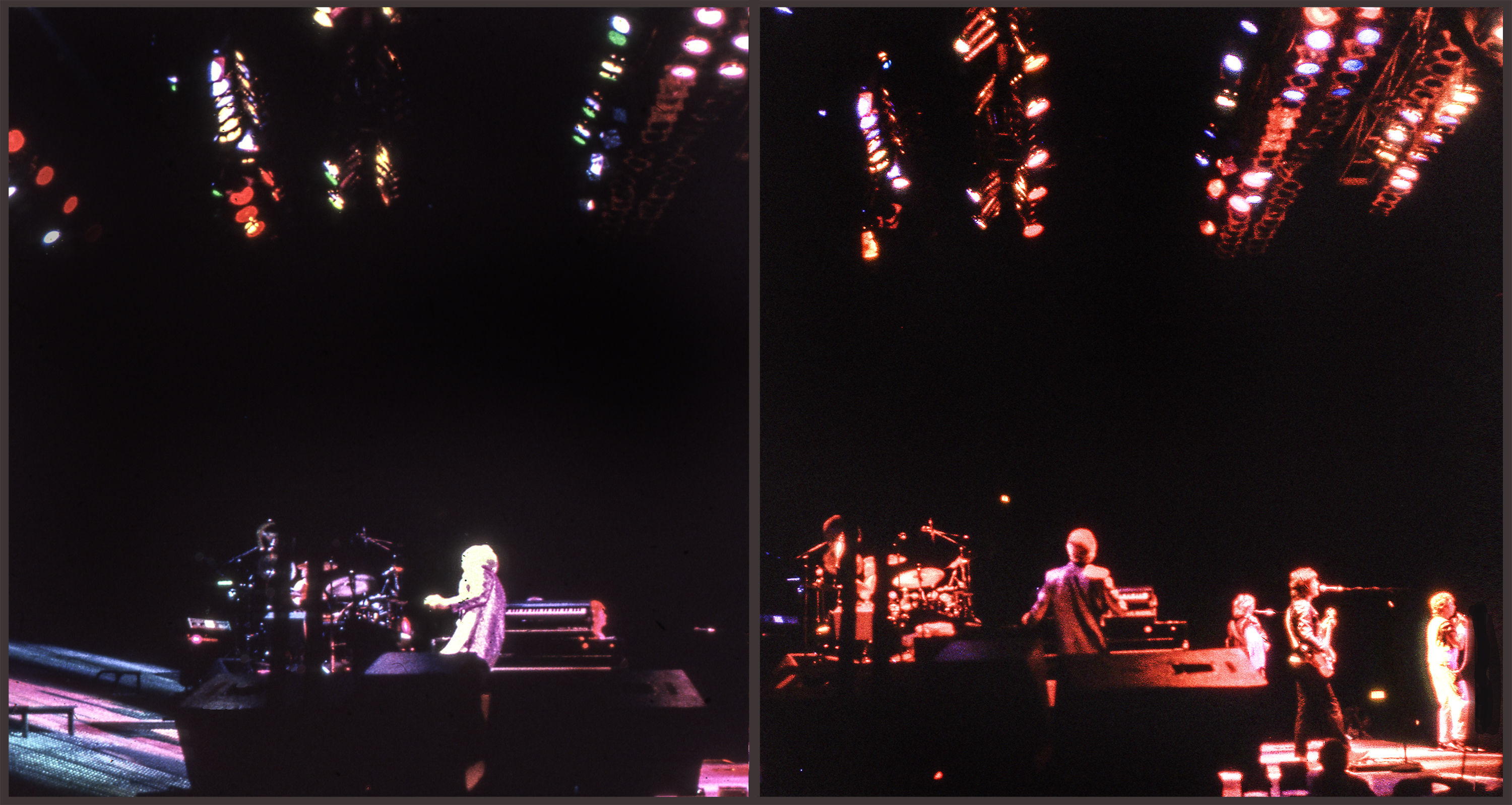 Yes with Tony Kaye flexing his musical muscles | Miami University, Oxford OH | Photos: Sam A. Marshall/Cincinnati OH
Yes with Tony Kaye flexing his musical muscles | Miami University, Oxford OH | Photos: Sam A. Marshall/Cincinnati OH
“It can happen to everyone eventually. . .”
As already described in earlier parts of this series, “Owner of a Lonely Heart” was my first ear- and mind-opening experience with 90125, in the fall of 1983. And then the album followed, and it wasn’t long before I champed at buying my own copy. Thematically, the album was bright-sounding, both harmonically and lyrically. It was full of songs about optimism and self-actualization, healing from a broken heart, making peace with your past, the zigs and zags of life on the road, and misadventures in the city. Nary a fairy or even a Siberian Khatru could be found anywhere in those lyrics, and I couldn’t say that I minded a bit.
Before I bought the album, though, other songs soon followed on the radio, and the one I remember most vividly at the time was “Changes.” I was immediately taken with the polyrhythmic opening figure doubled by keyboards and guitar. Though the sampled marimba-like part had a slightly mechanistic feeling not unlike some Peter Gabriel electro-World music rhythms of the early ‘80s, there was a cleanness and precision that appealed to my own increasingly ‘80s-oriented ears. As far as I was concerned, Yes had closed one more sale.
Rabin’s melancholy voice in the main song and the wistful lyrics of “Changes” told that tale of a broken heart, but there was also a triumphant sound of resolve in the choruses. The power chords of the refrains and bridge – and especially Jon Anderson’s close vocal counterpoint – gave hopeful balance and affirmation against the bleakness of the verses. And these were words that mattered to me at the time, and I never got tired of hearing them:
“Change, changing places/Root yourself to the ground/Capitalize on this good fortune/One word can bring you ‘round/Changes. . .”
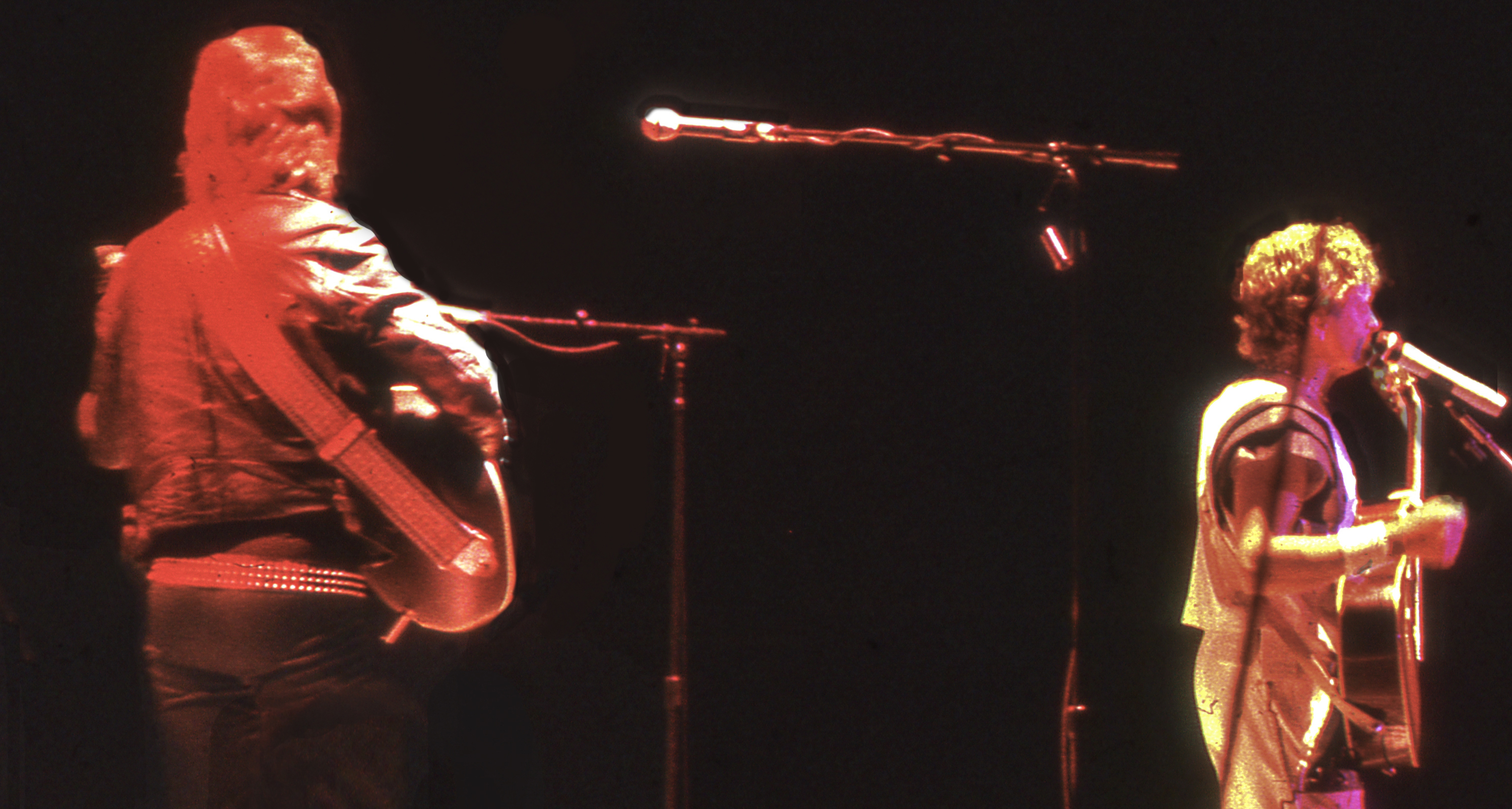 Trevor Rabin & Jon Anderson in an acoustic moment | Miami University, Oxford OH | Photo: Sam A. Marshall/Cincinnati OH
Trevor Rabin & Jon Anderson in an acoustic moment | Miami University, Oxford OH | Photo: Sam A. Marshall/Cincinnati OH
Another 90125 song that had broken hard and fast on the radio was “Leave It,” an almost-Beach-Boys-type pop song with an inventive use of layered and rhythmic call-and-response vocalese over a thick, disco-like pulse. (This was not only a successful radio track but it also played an important part in the live shows.) But, for my purposes, I seem to recall having already bought my copy of the album before the song was burning up on the radio and MTV. To that point, for all the work that Trevor Horn and the band had put into the perfecting of the album’s lead track “Owner” and ensuring its success, it actually turns out that “Leave It” received the most benefit of audiovisual pre-production and a deluxe promotional push.
First, Horn saw to it that he would craft a number of those very groovy extended dance mixes of both “Owner” and “Leave It”. (One mix of the latter was an a capella version, which also had a hot, short run on FM Radio. And I bought one of those original, limited-edition vinyl EPs, too, after hearing that on my local radio station.) This was similar to what he would soon do with Slave to the Rhythm, a 1985 album by Jamaican alternative-pop singer Grace Jones which Horn would also produce very close in time. As a co-writer and eventual producer of the core ‘song’, he basically did multiple treatments of the same song form, though each variation on that album would have a different name. But he was trying it all out on Yes first.
Second, the band had hired the award-winning and highly experimental film/video producers, Kevin Godley and Lol Creme, to create not one but 18 versions of the music video for “Leave It” which made their first appearance near the end of March. All of these were derived from one grueling, single-day video shoot – generated from static, charcoal-suited profiles of the five musicians against a white-seamless studio backdrop. The producers’ neat trick was in the wildly divergent digital alterations of each version, which – taken together – seemingly made fun of all the overindulgent video tropes of the early MTV era. (MTV would rotate versions, and once even ran a marathon and a contest for viewers to spot all the differences. But, today, only a couple known versions have survived the ravages of time.)
In short, the videos were more or less the musicians – all dressed in funereal drab and looking more like accountants than rock stars – ironically mourning the death of the sequined-and-silk-caped Middle Earth Yes of old. (Ahh, but rest assured, “Fish” would still wear his fur-trimmed Medieval Coat-of-Many-Colors on stage.) In the original version, all the members were stock-still against that white background – but the real twist was that the image was flipped upside down! And from there, the permutations grew wickedly more tongue-in-cheek, more distorted and visually torn asunder. In any case, for anyone who had preconceptions about the patchouli-and-silk-pantalooned Yes of old, the message of the videos seemed loud and clear: “Yes is dead – Long live Yes!”
“He Ready for Anything That Is. . .”
After several months of absorbing the new album and becoming deeply familiar with the songs, I got my chance to see Yes perform nearly the entire 90125 album live in Spring 1984. That live date was in late April at Millett Auditorium, a typical mid-size college sports arena on the campus of Miami University, in southwestern Ohio. This was the same venue where Talking Heads had made a stop on their historic Stop Making Sense tour – another show I had seen there – a mere six months before. Both shows were sold-out events, proving that Yes could easily keep pace with their trendier competitors in those wavy times.
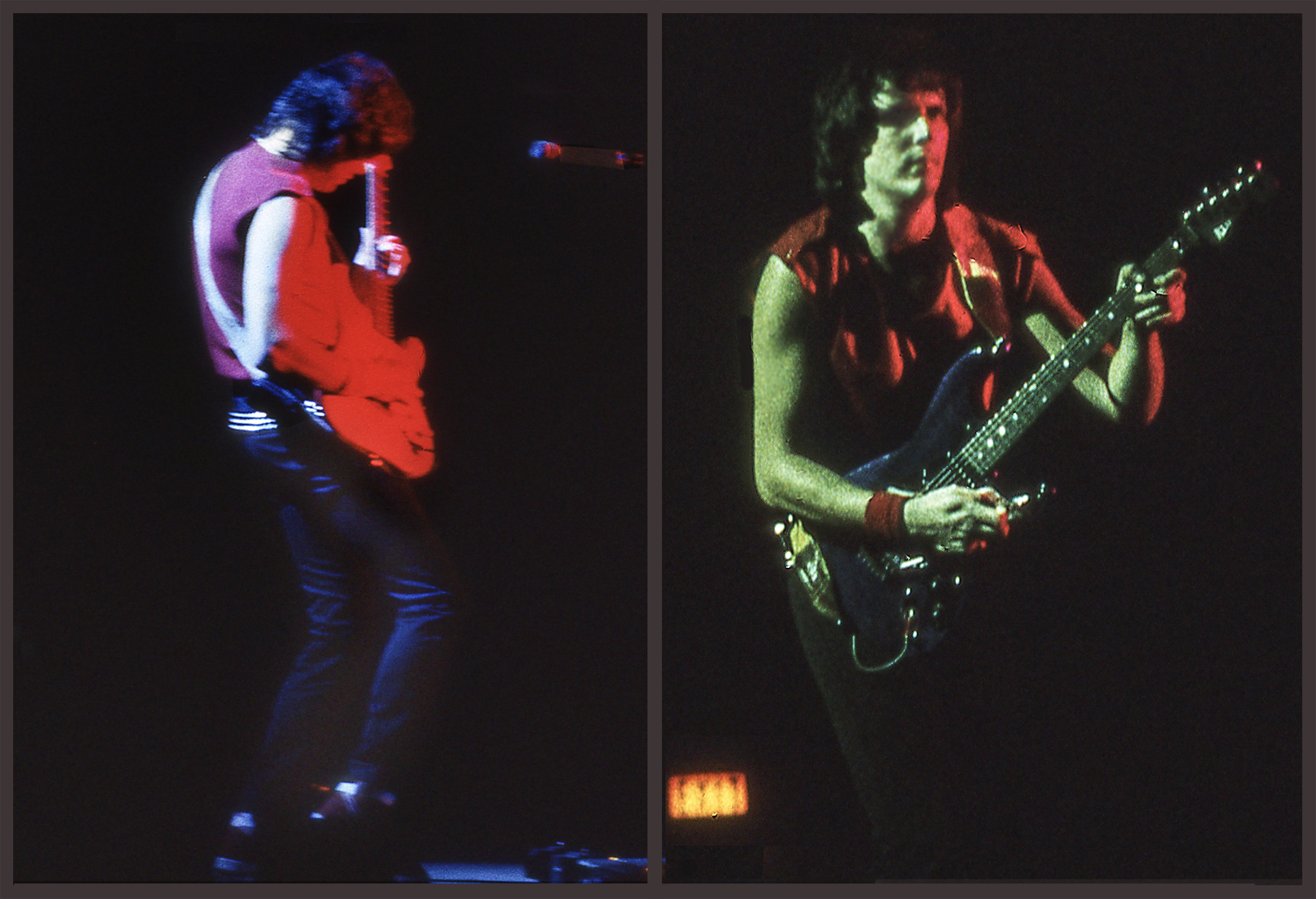 Trevor Rabin in top multi-modal form | Miami University, Oxford OH | Photo: Sam A. Marshall/Cincinnati OH
Trevor Rabin in top multi-modal form | Miami University, Oxford OH | Photo: Sam A. Marshall/Cincinnati OH
Quite coincidentally, I had the great fortune of living in the same apartment building at the time as a small group of younger prog and Yes fans who were also alumni of Miami University. Meaning: When tickets went on sale, my tuned-in neighbors were able to lock in seats that were adjacent to the stage in a special alumni pre-sale. And, thankfully, even though I had only recently made acquaintance with these younger, prog-friendly fans, they invited me along for the show. That made me a very happy camper.
Photo access was a bit less regulated at that time, but being in a VIP section for the show also enabled me to bring along a camera. Although not a very experienced photographer in those days, I was definitely in the catbird’s seat for this show. So, as you can see throughout this multi-part series, I was able to capture a fair number of photo souvenirs, although my quality at the time was obviously highly variable.
I had seen previous versions of the band – including Yes’ breakthrough 1971 North American tour on which Rick Wakeman had already replaced Tony Kaye by the end of that year. I had become thoroughly jaded with the pomp-and-circumstance of two other Wakeman-centric shows that I had seen later in the decade, so I had felt that I never needed to experience that kind of Yes show again.
But here was a new era with Tony Kaye back on stage – sporting a sequined smoking jacket at first and then stripped down to a white muscle-shirt. Rabin was also studded out in rock-star leather, and Anderson vamped out in an economical track suit and gym shoes. So we in the audience could size up visually that Yes would be offering us a different kind of Grand Night Out. And the music backed up that message.
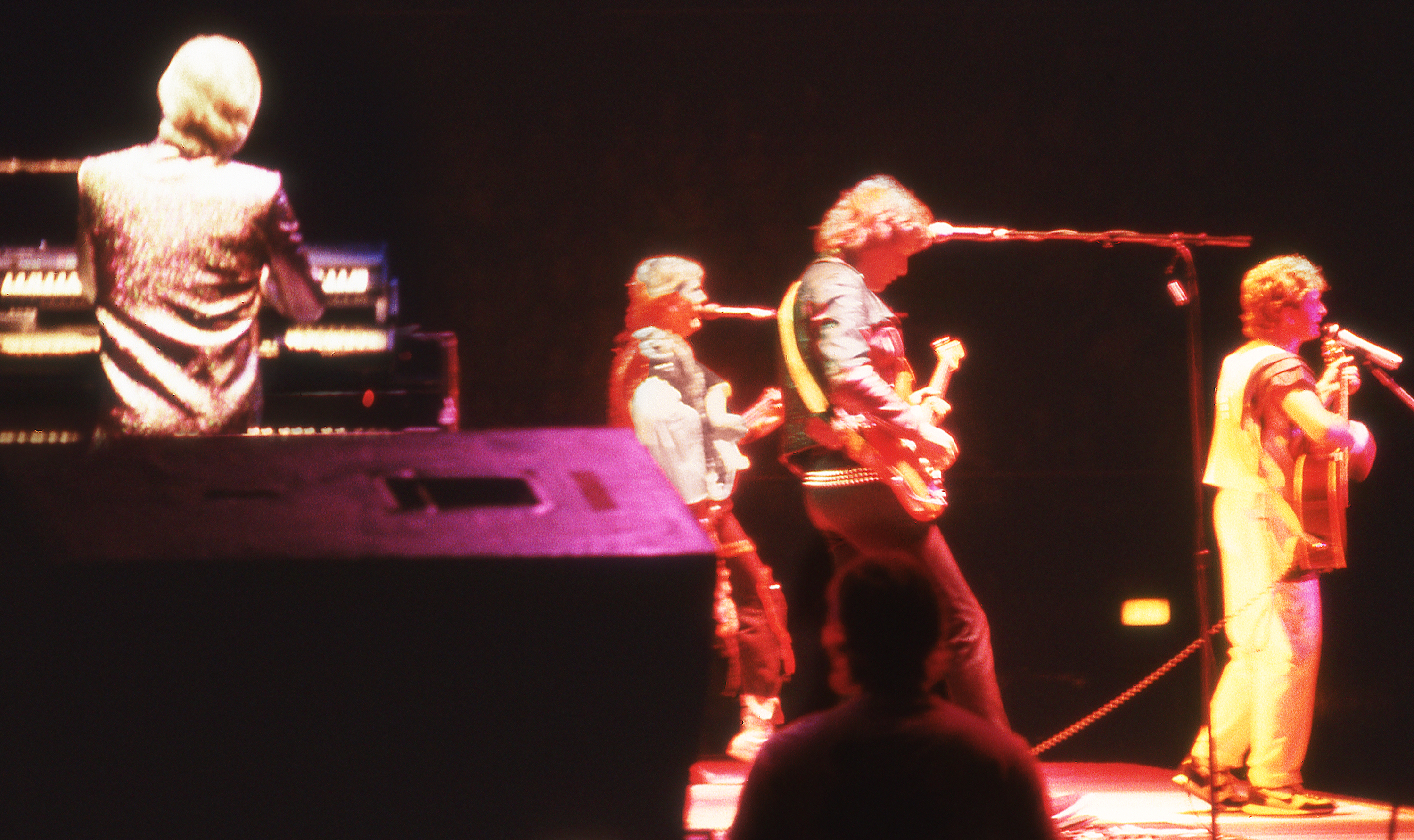 Yes with Tony Kaye shining brightly | Miami University, Oxford OH | Photo:Sam A. Marshall/Cincinnati OH
Yes with Tony Kaye shining brightly | Miami University, Oxford OH | Photo:Sam A. Marshall/Cincinnati OH
On the night of the show, a brief ambient-electronica prelude accompanied the band members as they ambled onto the stage and took their places. Then – BAM! – the band launched into the thundering instrumental, “Cinema”, with its searing Steve-Hackett-like leads courtesy of guitarist Rabin and the shimmering, celestial keyboard layers. Just like the recorded version on 90125, it was a squeaky-tight, two-minute sonic assault that left no doubt that this we were about to hear a full-blown prog show. Nothing was left to chance, to be sure.
A rear projection screen at the back of the tilted, oval, high-tech, metal-grid stage made its appearance during this opening. Colorful animated pieces of the album cover’s de-mystifying, postmodern graphic logo went flying into place on a Tic-Tac-Toe grid over the bouncy, techno Linn drum groove before the next song. And then, like a choir of angels on high, the voices of Rabin, Anderson and Squire exploded out of the PA, announcing the beginning of “Leave It.” (With access to archival recordings of the tour via YouTube, I can now clearly hear that portions of the layered voices had been dropped in from the studio master. Too perfect for completely ‘live without a net’, but it had never even crossed my mind at the time! It was just so powerful and attention-getting, and that’s all that mattered.)
The chunky rhythm and gated drum fills propelled the song forward through the verses, with the commanding call-and-response of the vocalists finally ending on the hanging refrain of the song’s title. Quite a triumphant entry and mission statement from the band whose death certificate had been all but signed and tagged onto the body bags back at the end of 1981. It was a defiant shout of “Hey – mofos! We’re back! Didja miss US?”
 Yes, live on arrival | “Leave It” | Miami University, Oxford OH | Photo:Sam A. Marshall/Cincinnati OH
Yes, live on arrival | “Leave It” | Miami University, Oxford OH | Photo:Sam A. Marshall/Cincinnati OH
The show had a good-natured, fun-loving feel and yet a bracing pace, delivering the thrill of the new courtesy of the obvious radio songs and stronger, deeper tracks from 90125. (All but one of the album’s nine tracks made it into the show.) But those songs – such as next-in-line song in the setlist “Hold On” and later on “It Can Happen” and “Changes”, were also interspersed with more epic, early-1970s Kaye-anchored and Squire-propelled songs like “Yours Is No Disgrace” and “I’ve Seen All Good People”.
Yes, some obligatory nods were also made to the‘70s Howe/Wakeman version of Yes in the middle section of the show with songs from Fragile and Close to the Edge. Even the short Patrick Moraz era of Yes’ Relayer album was represented with a brief interlude of a song from that 1974 recording. It’s worth noting, however, that some of those selections were set into medley form, abbreviated or even just briefly quoted. That must have been an intentional ploy to ‘right-size’ the wider arc of Yes history more compactly for the show and to help the band cut a few musical corners while keeping the attention of older fans. As MVPs in the band, veteran keyboardist Kaye and freshman guitarist Rabin also got sparkling spotlight moments with instrumental solos of their own.
With decided acceleration into the final stretch of the show, the band burned through a genius sequence of the best new and old favorites. Obviously, Yes’ big new hit, “Owner”, had to be in that final run, and it was teased in with a bit of a discarded 90125 Rabin song, “Make It Easy”. Of course, I had no knowledge of this song at the time and have only learned about it many years later. (The full song did surface on expanded deluxe editions of 90125 in more recent years.) But it was certainly another moment of spotlighting for the guitarist that seemed unfamiliar but ear-catching at the time. It was one more nod to the guitarist’s strong presence and fresher sound in the mix.
Then came the must-play flashback from Fragile, “Long Distance Runaround/The Fish”, with a masterful extended bass solo from none other than “Fish” himself that included his thematic use of space-y and spiky false harmonics. Within the bookending theme of the 10-minute-plus “The Fish” instrumental section that followed “Runaround”, Squire squeezed in a frenetic bass melody from the Drama song “Tempus Fugit” along with other brief Yes quotes. (You had to listen closely to catch them all!) And drummer White – not quite soloing but giving as good as he got – exchanged a series of dueling call-and-response fills with the bassist.
Coming to a bittersweet conclusion, Squire put his final stamp on the barreling jam with a droning, fuzz-bass recitation of the immortal Gospel song, “Amazing Grace”, very much in the vein of Jimi Hendrix’s famous version of “The National Anthem”. (Being close to the stage with my camera at that final moment, I had the great luck to document that solo from this iconic bassist for posterity.) This showcase for the rhythm section at this peak moment would in time be identified by the name “Whitefish”, a fact I had no awareness of until very recently. But, obviously, it all makes perfect sense now: The perfect name for the perfect moment from the perfect rhythm section!
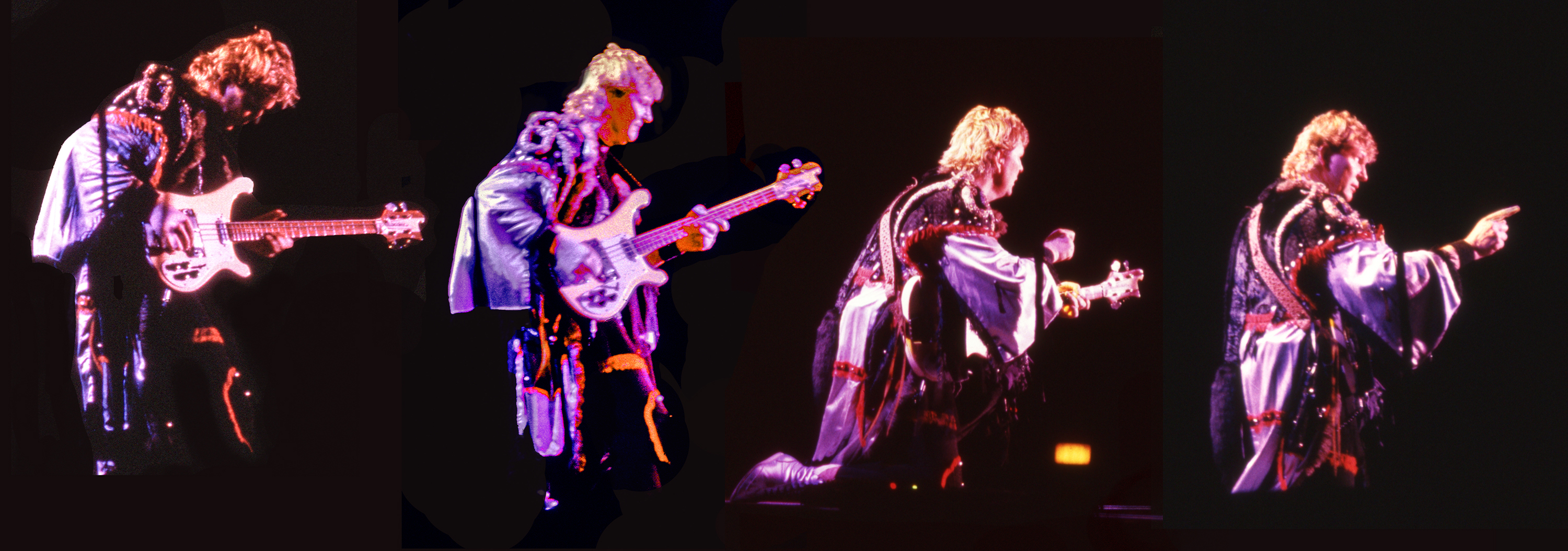 Chris Squire | “Whitefish” Solo | Miami University, Oxford OH | Photo Montage: Sam A. Marshall/Cincinnati OH
Chris Squire | “Whitefish” Solo | Miami University, Oxford OH | Photo Montage: Sam A. Marshall/Cincinnati OH
That drive to the end of the set included a cranked up performance of the gritty 90125 track, “City of Love”, easily the most metallic song Yes has ever done. By this point in the show, the band had whipped the audience into peak energy, just in time to hit us with a colossal, show-ending version of the Yes Album classic “Starship Trooper”, whose title Anderson repeatedly teased in the build-up at the end of “Love”. It was another of those classic Kaye showcases that I wish I had been able to hear while he was still in the band in 1971, but the thrill for me was finally getting to hear him in this show.
Along with Kaye, the band played triumphantly, with single-minded purpose throughout the multi-part epic. In the blistering ending, during which Rabin worked the front of the house and side ramps as hard he could with his solo, lasers flashed and the lighting rig began to separate and hover down over the musicians as if it were a descending alien Mother Ship lowering its on-board ramp. Epic showmanship! And, y’know, by show’s end – after the rousing, full-length “Roundabout” encore that followed –my mood was so elevated I’d have gladly climbed the stage and walked up that ramp myself.
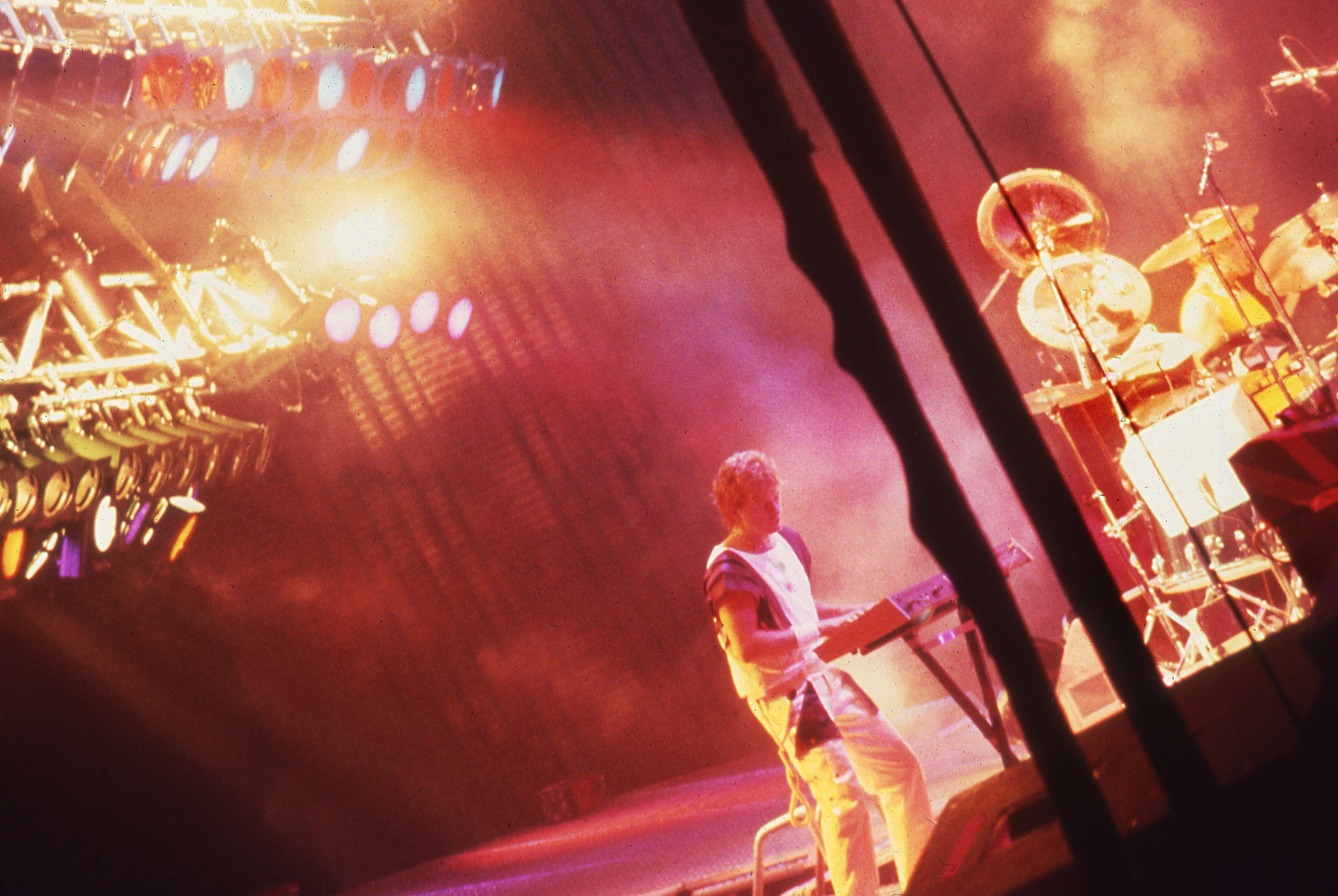 Jon Anderson & Alan White | “Starship Trooper” |Miami University, Oxford OH | Photo: Sam A. Marshall/Cincinnati OH
Jon Anderson & Alan White | “Starship Trooper” |Miami University, Oxford OH | Photo: Sam A. Marshall/Cincinnati OH
“When we reach/we believe in Eternity. . .”
As luck would have it, I was not the only person wielding a camera on Yes’ 1984-1985 tour. (No luck at all, actually, since Yes – with great foresight – hired then-young filmmaker Steven Soderbergh years before his Hollywood success to document performances and behind-the-scenes action.) The tour that took place over that year spawned the almost-inevitable live concert film, which – wait for it – was named 9012 Live. Also accompanying this was a single-disc live album, 9012 Live: The Solos.
In hindsight, it’s obvious that it was all in a short period of time, but it was two years to the month since 90125’s appearance that 9012 Live was finally released. In what was seen as a ‘modern age’ with state-of-the-art technology at the time, the concert film was released on VHS tape in November 1985 as a companion release to the live album, 9012 Live: The Solos. The film was also said to have been shown in full on MTV, although I did not ever personally see it on the air.
If you'd happen to see the original version of the film now, you'd quickly realize it was a product of its time, with overuse of special video effects common of the era. Fortunately, it was later re-released on DVD in 2006 with bonus footage and a director's cut without the annoying effects. Soderbergh’s coverage of the tour would go on to earn him and the band a Grammy Award nomination for Best Music Video, Long Form. (One would guess that was the original, overwrought version.)
For its part, 9012 Live: The Solos was not a traditional live album but more of an EP that was intended as a companion to the full-length concert film. (Even the video did not contain a complete setlist from the tour.) Actually, it was pretty true to its name, featuring mostly those moments of the show that showcased the various members stretching out. It did, however, contain two full 90125 songs, “Hold On” and “Changes”. Then, in 2009, an expanded reissue included two bonus 90125 tracks, “It Can Happen” and “City of Love.” Interestingly, all of the full tracks were taken from the soundtrack of the film – captured in Edmonton, Alberta CA, in September 1984, but the solos were taken from other dates.
Never having acquired any of these after-tour products for myself, I really had no idea of these artifacts’ existence until stumbling into them in the wonderful world of YouTube within the last few years. In particular, I chanced upon an extended behind-the-scenes raw video documentary that Soderbergh captured, showing the band backstage before a show and winding down afterward, and otherwise being unscripted and unguarded. Quite insightful – and funny!
And, of course, there are full audio rips – even a few full shows on film – from various archival audience recordings that one can listen to for more insight. But, obviously, the quality is not always outstanding, and your mileage may vary on how long you listen to or watch them. (You may very well do as I have done and cherry-pick to hear selected songs.) But there is no arguing with the quality of the performances. I must say, however, that all of these documents have helped to preserve a moment in Yes’ history in which they had successfully re-invented themselves and found nearly universal acceptance everywhere they went. And it was about as happy as they would ever be.
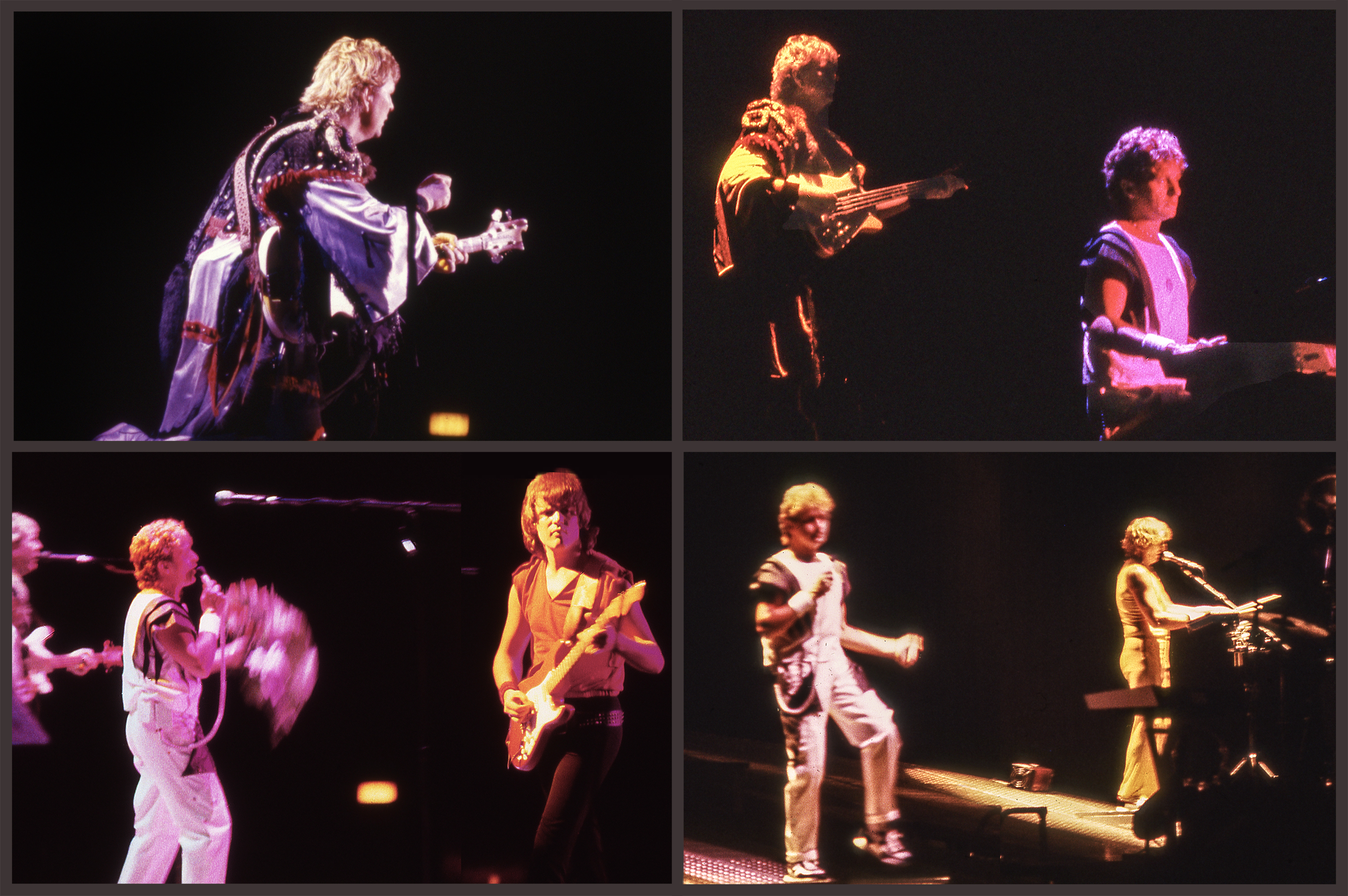 Yes | Miami University, Oxford OH | Photos & Composite:Sam A. Marshall/Cincinnati OH
Yes | Miami University, Oxford OH | Photos & Composite:Sam A. Marshall/Cincinnati OH
If you are an aspiring Yes completist and were not aware of all these documents, I would encourage you to let yourself go down the rabbit hole and seek out what exists on YouTube. It is worth mentioning, however, that there are also the expanded and deluxe editions of 90125, plus a limited-edition collection of Trevor Rabin’s original early-'80s demos for the album titled 90124. And, for the serious Rabinophile, the guitarist also released a 10-CD box set in 2020 titled Changes. This limited-edition collection encompasses all of his 90125-related recordings, as well as revisiting his solo releases and later work as a composer for movie original soundtracks.
Although Yes would live through many more line-up changes and would release another dozen albums since that peak in the 1980s, there’s a quality about the 90125 album and live recordings that seems quite like preserving a scarab in amber. (Fwiw, a Steve-Howe-led incarnation of the band is touring again this year and Jon Anderson is still performing Yes music with his own backing musicians, so it does seem that the present-day Yes refuses to die.)
The 90125 album – born out of great inspiration and so much creative struggle – perfectly captured the band reborn, brimming with confidence and energy and ready for world domination. And, quite truly, you had to be there for a live performance on that tour, because it was something that had to be experienced in the moment, not merely via recordings. And the lightning that came out of that bottle would never strike again.
See Parts I & II here:
"YOU'VE GOT TO WANT TO SUCCEED" - YES' "90125" ALBUM 40 YEARS ON – PART I
"ROOT YOURSELF TO THE GROUND" – YES' RACE TO DELIVER "90125" ALBUM – PART II
This three-part series is “Dead-icated” to the memory of Joseph Stercz, of Cincinnati, Ohio, a true fellow astral traveler who loved Yes, even when I was ‘he of little faith’. And, of course, we must never forget the late, great Chris “Fish” Squire, the trail-blazing Yes bass master who unleashed the lightning.





